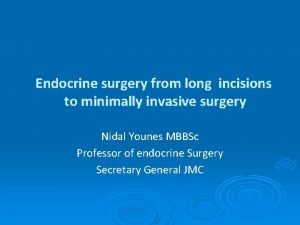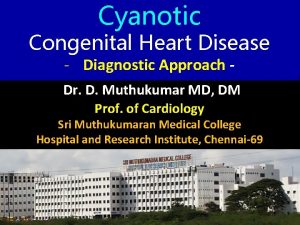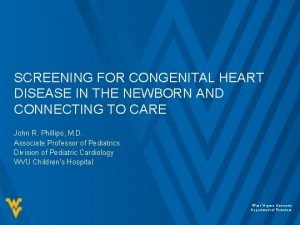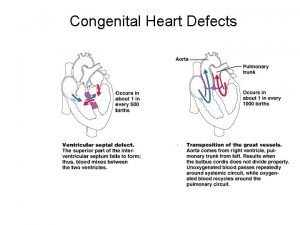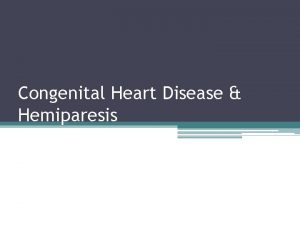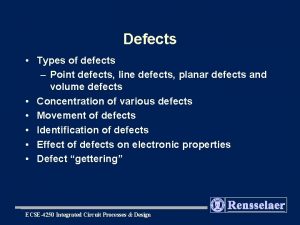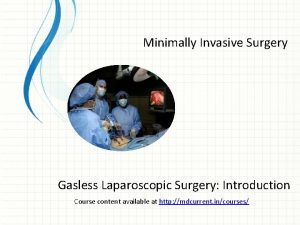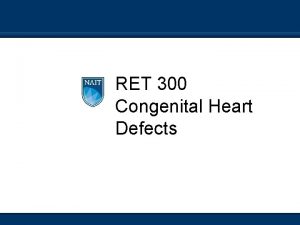Minimally invasive surgery for congenital heart defects in







- Slides: 7

Minimally invasive surgery for congenital heart defects in pediatric patients: Technique and results from an initial experience Calle Valda CM. , Boni L. , García Torres E. , Arias Dachary FJ. , Melo M. , Cano Novillo I. , García Vázquez A. PC 70

BACKGROUND • Minimally invasive approaches in congenital heart surgery have gained popularity and have been associated with better outcomes. • The aim of this study is to describe our initial experience in starting a new program on minimally invasive pediatric cardiac surgery.

METHODS • Retrospective, observational, cohort study from 17 patients undergoing by minimally invasive heart surgery. • Three different approaches: ü Limited right anterolateral thoracotomy (LRAT) (n=7) ü Upper-ministernotomy (U-MS) (n=3) ü Left thoracoscopy (LTS) (n=7) February 2014 October 2019

RESULTS • The average was 6. 0 ± 4. 5 years (range: 2 months– 16. 4 years). The average weight was 24. 3± 17. 1 kg (range: 7. 7 - 66 Kg). • The corrected defects included: Ø Secundum atrial septal defect (pericardial patch closure= 4 and direct suturing =2) Ø Aaortic valve replacement (n=2) Ø Vascular ring division (n=5) Ø Excision of interventricular septum tumor (1) Ø Veno-arterial extracorporeal membrane oxygenation implantation (ECMO) (n=1), Ø Permanent pacemaker implantation (n=1) Ø Pleural pericardial window (n=1)

Procedure OS atrial septal defect closure Aortic valve replacement Vascular ring division Excision of interventricular septum tumor Veno-arterial ECMO Permanent pacemaker implantation Pleural pericardial window Total Limited right anterolateral thoracotomy 6 - Upperministernotomy Left thoracoscopy 2 1 - 5 - - 1 7 3 1 7 Table 1. Relationship between approach and procedure along the study period

RESULTS • The mean cardiopulmonary bypass time was 65. 9 ± 27. 2 min (range 27 - 114 min) and the mean aortic crossclamping time was 39. 4 ± 26. 3 min (range 14 94 min) in LRAT and U-MS groups. • There were no perioperative complications, with the exception of one case with mild left subcutaneous emphysema in the LTS group. • Mean ICU stay and hospital stay were 1. 1± 0. 4 days and 3. 1± 0. 9 days, respectively. • We had zero surgical mortality. The aesthetic results were excellent. Follow-up (mean 28. 2 ± 17. 9 months) was uneventful.

CONCLUSIONS • We believe that minimally invasive surgery is a safe and effective alternative to a traditional sternotomy for correction of congenital heart defects. • Advantages of this approach include less injury, maintaining the continuity and the integrity of the bony thorax, benefits of improved cosmesis, reduced post-operative pain, shorter length of stay, and faster return to activity.
